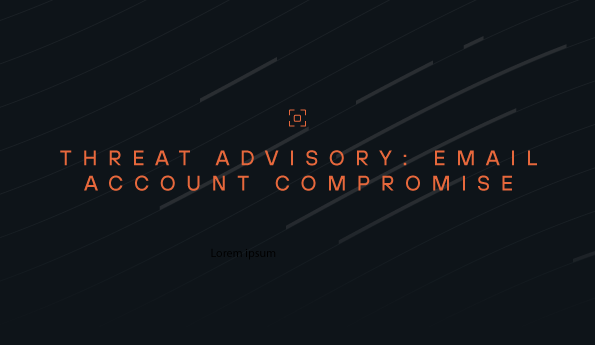Simplifying cybersecurity maturity with managed cloud SIEM
As organizations adapt to modern cyber threats, their natural progression is to find more ways to mature their cyber program and defend against attacks of any type. Cybersecurity maturity is an arduous business, however, requiring ongoing improvements across people, processes, and technology (PPT).
One key area in this endeavor is visibility, the backbone of any cybersecurity program. Traditionally, Security Information and Event Management (SIEM) provided such visibility but has often been associated with extensive management and hosting headaches.
For organizations looking to mature their approach to cybersecurity, managed cloud SIEM provides a way to easily and effectively increase visibility across their attack surfaces without the drawbacks of traditional SIEM. Let’s explore how you can use managed cloud SIEM to streamline the journey to cybersecurity maturity.
Why managed cloud SIEM?
Managed cloud SIEM provides organizations with all the benefits of SIEM and none of the hassle or operating overhead of implementing or hosting one. Like traditional SIEM solutions, managed cloud SIEM comes with hundreds of pre-built detection rules, correlation logic, and integration capabilities. That means you can ingest data sources from across your IT environment and start reaping immediate insights and value from day one.
But unlike a traditional SIEM, managed cloud SIEM is continuously optimized by the provider, with new rules to anticipate emerging threats and ongoing tuning to reduce false positives. Of course, you can also customize your managed cloud SIEM instance even further to suit your exact needs and specific IT challenges.
How managed cloud SIEM streamlines cybersecurity maturity
Understanding these benefits, it’s plain to see how managed cloud SIEM can improve your operational efficiency. But it also provides immense improvements to your security posture and overall cybersecurity program.
Improved visibility and understanding
The cornerstone of SIEM is gaining visibility and understanding of user behavior and other activities. Because managed cloud SIEM streamlines your ingestion and detection capabilities, it makes it easier to understand a larger security picture faster than other SIEM options. Given the increased reliance on hybrid work and distributed IT resources, having a managed, comprehensive view of the organization helps even limited security teams detect anomalies that may indicate a potential threat.
Also, managed cloud SIEM’s native context and correlation engine streamlines the investigation process. By grouping related alerts from various touchpoints across the IT environment, managed cloud SIEM simplifies the process of building cases that show the extent of a security event out of the box. So, instead of taking time setting up detections and following breadcrumbs, security teams can drill directly into the heart of issues and act quickly to remediate them.
Threat hunting and management
Managed cloud SIEM enables your team to carry out more informed and sophisticated threat hunting activities. Using the insights it provides, security personnel can drill into detections that can indicate larger threats to their environments. These hunts are made even more effective when paired with third-party threat intelligence, which helps teams to monitor especially vulnerable systems, apps, or other targeted areas of the organization.
Ongoing threat hunting brings proactivity to blue team activities, anticipating potential attacks instead of addressing them after they occur. This is a hallmark of mature cybersecurity operations. And, since managed cloud SIEM correlates alerts for streamlined management, teams can understand threats at larger scales. Doing so shows what systems an attacker has affected and what areas must be addressed during remediation efforts.
Democratized insights
Featuring prebuilt dashboards and reports with intuitive search functionality, managed cloud SIEM puts the power of SIEM into anyone’s hands. Even someone with minimal security expertise can leverage it to gain the understanding necessary to make informed security decisions. Given the ongoing cybersecurity talent shortage, equipping less experienced employees with tools to improve their skills can significantly enhance the capabilities of any team.
In turn, it also frees up more experienced staff to focus on strategic cybersecurity initiatives. Instead of spending time managing the SIEM and its rules, they can focus on advanced threat detection and response or other investigative responsibilities.
These streamlined reporting capabilities make it easier for organizations to showcase their effectiveness and perform audits. The auditing process is critical for mature security operations, showing compliance regulators that the program meets requirements and helping teams identify ways to iterate and improve.
Centralized alerting
Combining the details above, managed cloud SIEM provides all these insights in a single browser tab. This comprehensive view helps save time switching between various logs and tools. The result is more efficient and effective security operations, enabling teams to make smart decisions while opening their time for other tasks and activities.
Specifically, during active security events, one centralized view makes it easier for teams to address issues at scale and dig into cases directly. This approach keeps the entire team pulling in the same direction, leading to more effective remediation and incident response.
Streamline your cybersecurity maturity
With managed cloud SIEM, organizations can gain insights and understanding necessary for maturing their cybersecurity programs while gaining operational efficiencies in the process. Of course, managed cloud SIEM is just a part of the PPT considerations behind a mature cybersecurity program.
To learn more about cybersecurity maturity and how to begin your journey, read our eBook. Download it for free today.
See Todyl in Action
Learn how you can protect what you built.
Stay on the Cutting Edge of Security
Subscribe to our newsletter to get our latest insights.



